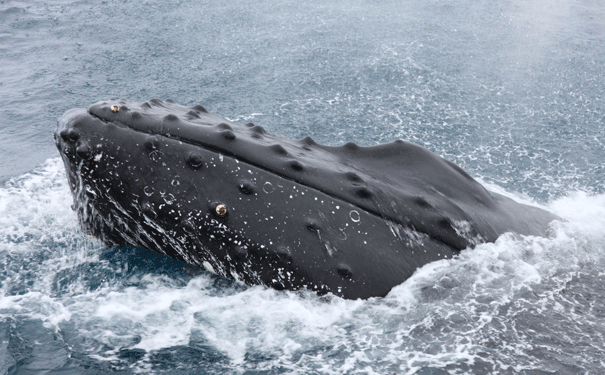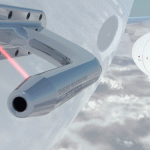
Humpback whales have a maximum length of 16 metres. Image: Shutterstock.
Migrating humpback whales are more likely to stay breathing on the surface when vessels are around.
Humpback whales use the east coast of Australia as a migratory corridor between their breeding grounds in northeast Queensland and the southwest Pacific Ocean and their feeding grounds in the Southern Ocean. The migration season lasts from April until November, as they head north in June/July and south in the spring.
As more whales pass along the coast in sight of land, people are eager to get a glimpse of them up close. This has raised concerns over the effects of whale watching vessels on whale migratory behaviour.
Researchers from Macquarie University and Taronga Zoo have released the results from a two-year study into the effects of whale watching near Sydney on northern migratory behaviour. By analysing whale behaviour in real time, the researchers could determine whether the whales changed their behavioural sequences when vessels were within 1000 metres.
“Our study didn’t show that the whales were completely unfazed by vessels; rather we found consistent, low-level changes in behaviour states,” said Macquarie University researcher Maryrose Gulesserian. “This means that the whales we monitored showed some change in their behaviour state, but were not as extreme as other studies have found, such as increased deep diving.”
This population is the largest of the Southern Hemisphere humpback whale stock. Their numbers were decimated as a result of whaling in the mid 20th century, but they are now recovering at close to the maximum growth rate.
This increasing abundance of whales has also resulted in a growth in the whale watching industry over the last decade. Over 25,000 people boarded dedicated whale watching vessels in Sydney in 2008.
In spite of the large numbers of whale watching vessels, the results from the study appear positive for whales passing the Sydney area. The migrating humpbacks were more likely to stop deep diving and remain breathing on the surface when boats were nearby.
“We also found that when whales that were on the surface breathing were approached by vessels, they generally switched to short, shallow diving,” Gulesserian said.
There have also been reports of whale muggings from boat operators. “This is when the whale comes very close to the vessel to “˜have a look’ and the vessel has no choice but to remain where it is until the whale moves away.”
Under NSW regulations, vessels are not permitted to be closer than 100 metres to an adult whale and 300 metres for a calf, unless the whale approaches the vessel voluntarily.






